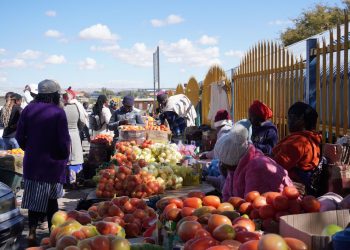
The Ministry of Environment, Forestry and Tourism says Namibia could generate at least 1.5 billion tonnes of biomass from the 45 million hectares of the country that is bush encroached.
The Minister of Environment, Forestry and Tourism, Pohamba Shifeta, said to date, nearly 2 million tonnes of biomass are harvested every year, translating into thousands of job opportunities for the Namibian youth.
“If we look after this resource well, we are assured that it will be with us for a long time. It is against this backdrop that, the Government as the regulator, is yearning to work with the industry to ensure the bush biomass resources are exploited in a responsible manner to achieve both rangeland restoration while safeguarding environmental well-being,” he said.
Shifeta said the Ministry has noticed with concern that some people in the biomass sector resort to unsustainable methods of bush control.
“I implore you to desist from these practices and those who engage in them, should not cause harm to this thriving sector,” he said during the Standard Bank Biomass Fair and Industry Conference 2023.
At last year’s Biomass Fair and Industry Conference, the ministry launched the National Strategy on the Sustainable Management of Bush Resources (2022-2027), which is being implemented to guide the utilisation of biomass resources in Namibia.
Shifeta noted that the strategy is providing clarity, promoting and ultimately enabling sustainable harvesting of excessive bush as well as highlighting appropriate post-harvesting practices.
“In other words, the strategy was developed to ensure optimal management and use of bush resources to safeguard the sustainability of the resource base, environmental and socio-economic benefits of bush control,” he explained.
The biomass sector has grown in leaps and bounds over the past 10 years, attributed to the cooperation between Namibia and Germany, which saw significant investment into the Biomass sector through the GIZ Bush Control and Biomass Utilisation Project.
Meanwhile, NamPower, the Ministry of Environment, Forestry and Tourism and the Deutsche Gesellschaft für Internationale Zusammenarbeit (GIZ) GmbH-Bush Control and Biomass Utilisation (BCBU) Project, with the support of Namibia Biomass Industry Group (NBiG), commissioned a macroeconomic study in 2018 to quantify and assess the microeconomic and macroeconomic impact of a 20MWe (nett) Otjikoto Bush Biomass Project.
NamPower’s 40 megawatts (MW) biomass power station aims to yield around N$21 billion in microeconomic and macroeconomic benefits.
The project entails the development of a 40MW biomass power station utilising Namibian encroacher bush as the fuel source.
The proposed power station will be developed as an Engineering Procurement and Construction (EPC) project and will be owned and operated by NamPower where the majority of the costs for the project will be leveraged from the power utility’s balance sheet.
This comes as NamPower has put out a bid for the EPC closing in November.
Bush encroachment in Namibia affects 26 million hectares of potential agricultural land for livestock and food production.
“The power station is set to assist NamPower to strengthen its domestic local generation mix and further stabilise the national power grid with a fully dispatchable energy source which could provide baseload energy,” the project overview report noted.
The report notes that the project also brings a number of macro and microeconomic benefits which include improved livestock carrying capacities through increased rangelands and agricultural productivity.
Furthermore, “increased groundwater within the harvested areas, displaced carbon dioxide emissions to the benefit of the region, contribution to the Gross Domestic Product (GDP) of Namibia and direct and indirect job creation throughout the fuel supply chain and the operation of the power station”.
Â
Â
Â











